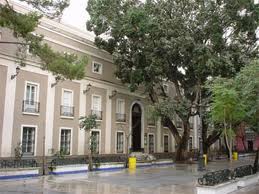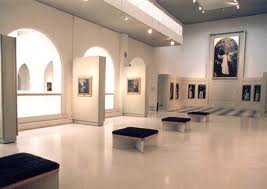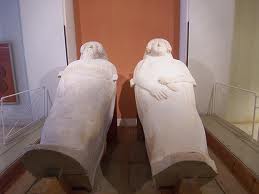Spanish Museums: Cádiz: Museum of Cádiz

The Museum of Cádiz (Museo de Cádiz) is a Spanish museum that is dedicated to the Fine Arts over the centuries. Its collection is extremely varied and ranges from the ancient in their archaeological section, to the contemporary in the Fine Arts section, with everything in between.
History
The Museum of Cádiz as we know it today began in 1835 after the Confiscation of Mendizábal. These works along with the works that were originally placed in the city's Academy of Fine Arts would become the first works in the collection of the museum. These included many pieces that had been taken from convents across the region. Some of the most important works acquired during this time included a set of paintings by Francisco de Zurbarán which had been seized from a monastery in the town of Jerez de la Frontera.
During the 19th Century, the Academy of Fine Arts began collecting works that had been produced by the Cádiz school of art, which was flourishing at this time. The artwork collected consisted in the Historical, Neoclassical and Romanticist styles.

The museum's archaeological collection began to be developed by a stroke of luck. A Phoenician sarcophagus was discovered at the archaeological site at the old Cádiz shipyard which helped to support the case for a museum dedicated to this topic being created in the city of Cádiz. This section of the museum therefore grew as more and more archaeological digs were carried out in the region as well as the numerous donations from other museums that the Museum of Cádiz received.
During the museum's history, the location of the museum has been varied including in Callejón del Tinte and Paseo de Canalejas. In 1935, the museum's headquarters were established in the Plaza de Mina, sharing the space with the Academy of Fine Arts. However at this time, the museum still remained in two separate parts - Archaeology and Fine Arts. Eventually, in the year of 1970, the two parts of the Museum of Cádiz were united under a single director, along with the new section dedicated to Ethnology.
The Building
The building which houses the Museum of Cádiz today was originally built in the 19th Century on top of the ruins of a building belonging to the Order of the Francsicans. The building was designed by Juan Daura in a Neoclassical style and was completed in 1838.
In the 1980s, a three phase reformation and restoration plan for the entire building was drawn up which was to be headed by the architect Javier Feduchi. So far, two of the three sections of the plan have been completed, and the third is still ongoing.
The Collection
The Museum of Cádiz consists in three sections: Archaeology, Fine Arts and Ethnography. Due to the museum incorporating all three of these distinct areas, the collection of the museum is extremely large and varied.

The Archaeology section contains many fantastic discoveries from the local archaeological digs and covers sections such as ancient burials and rituals, Phoenician jewellery, and Roman artefacts.
The Fine Arts section covers paintings from the 16th Century up until the 20th Century. Painters included in the Baroque section of the art collection include Murillo, Zurbarán and Cano. Historical and 'Costumbrista' painting is represented in the 19th Century section of the Fine Arts part of the Museum of Cádiz, including work by artists such as Gonzalo Bilbao and Francisco Godoy, both from Andalusia. Due to the 20th Century being so rich in trends and artistic movements, the collection is split into the two halves of the century. Thus the first half includes work by Sorolla and Zuloaga, and the second half is represented by Rafael Alberti and a painting by Joan Miró.
The Ethnology section is smaller and focuses mainly on the 'Tía Norica' Puppet Collection and its history. Shows are put on to demonstrate how this old spectacle would have worked back in its original time.
